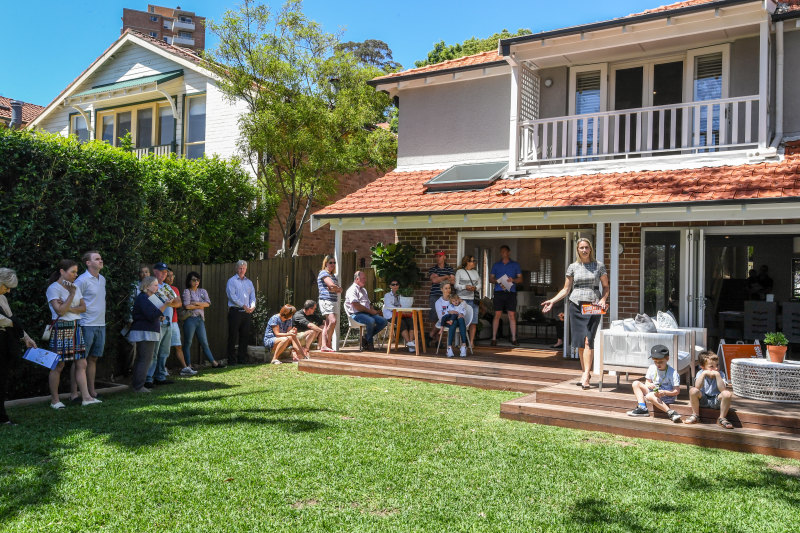The roadblock stopping couples from having more children, if any
The number of births is expected to plummet to the lowest quarterly levels in two decades as astronomical property prices in a cost of living crunch push couples to have fewer babies.
Oxford Economics forecast 61,222 births in the December quarter – the lowest level since June 2003 – in their annual construction conference in Sydney on Tuesday.
The independent advisory firm used Medicare’s ultrasound services data, which is ahead by two quarters, as a leading indicator of where the number of births would land by year’s end and noted the country’s unaffordable housing as a contributing factor for the decline.
Oxford Economics head of building and property forecasting Timothy Hibbert said unaffordable housing had played a part in slowing down Australia’s birth and fertility rates.
“Though it’s not the only contributing factor, it’s a complicated topic, we do see it as one of the key streams that has contributed to an easing fertility rate for Australia, but that just shows through the raw birth numbers as well,” Hibbert told this masthead on the sidelines of the Australia Construction Conference.
“In Sydney, that extra bedroom gets very, very expensive especially if you want to live in the inner ring of city,” he said. “So that has a big weight on it [family formation and size] so there’s quite substantial consequences with that.”
Sydney and Melbourne have entered ‘baby-recessions’ due to a range of factors, including their exorbitant housing and rental markets.
Hibbert also said that other cyclical and structural factors contributed to the slowdown such as the lull between the last mini-baby boom during the height of the pandemic as well as preference shifts of having smaller families or no children at all.
“It’s a contributing factor to family planning decisions. Cost of living has been an elevated concern, and it’s especially acute for those younger family households, that have recently formed in their late twenties, early thirties and so forth.”
He said the ultrasound data was a good leading indicator on the number of births as they are lagged.

“It basically helped providing us confidence that that was the lead that we’ve seen, but data also gives a few quarters of advanced perspective as to where we see that series potentially going.”
Australian National University’s Centre for Social Research demographer Dr Liz Allen said the cost of housing was a key barrier to family formation and size.
“Housing security, particularly homeownership, is on top of the checklist before they start a family and that is being delayed more and more,” Allen said, noting cost of living, including job security, climate change and gender equality as other barriers.
Allen noted that government departments were also looking to Medicare’s ultrasound services data as a more up-to-date statistic on where birth and fertility rates were headed but cautioned that not all ultrasounds are indicative of successful pregnancies.
“We’re seeing the commencement of independence being pushed out until people are in their 40s at which point it’s almost too late to start a family … because our ability to have children is reduced.
“We’ve got this perfect storm of socioeconomic hurdles that young people are unable to clear.”
She said without major policy shifts that make housing more affordable, the country would continue to see a decline in the total fertility rate.
Impact Economics chief economist Dr Angela Jackson said unaffordable housing was compounding weak economic conditions that are well known to drive birth rates down.
“There is no doubt that housing affordability has clearly reduced in a generation and it’s a substantial cost in people’s budget, and it’s clearly having an impact,” Jackson said. “The recent impact would have to do with slowing economic growth as well as housing costs. Housing affordability is compounding falling birth rates.”
She said it was a bigger problem in the capitals, such as Sydney and Melbourne, where house prices are several times people’s income.
“There are bigger falls in birth rates in Sydney and Melbourne where we know housing costs are a bigger issue. You can’t afford family accommodation close to jobs in a capital city.
“They’re very difficult decisions when you’re trying to start a family because you can’t afford to buy anything suitable. It’s a lot more difficult decisions and tougher trade off than previous generations have faced.”
We recommend
We thought you might like
States
Capital Cities
Capital Cities - Rentals
Popular Areas
Allhomes
More
/http%3A%2F%2Fprod.static9.net.au%2Ffs%2Fcd9e4972-9dff-48bb-9a57-89aef56995a9)









